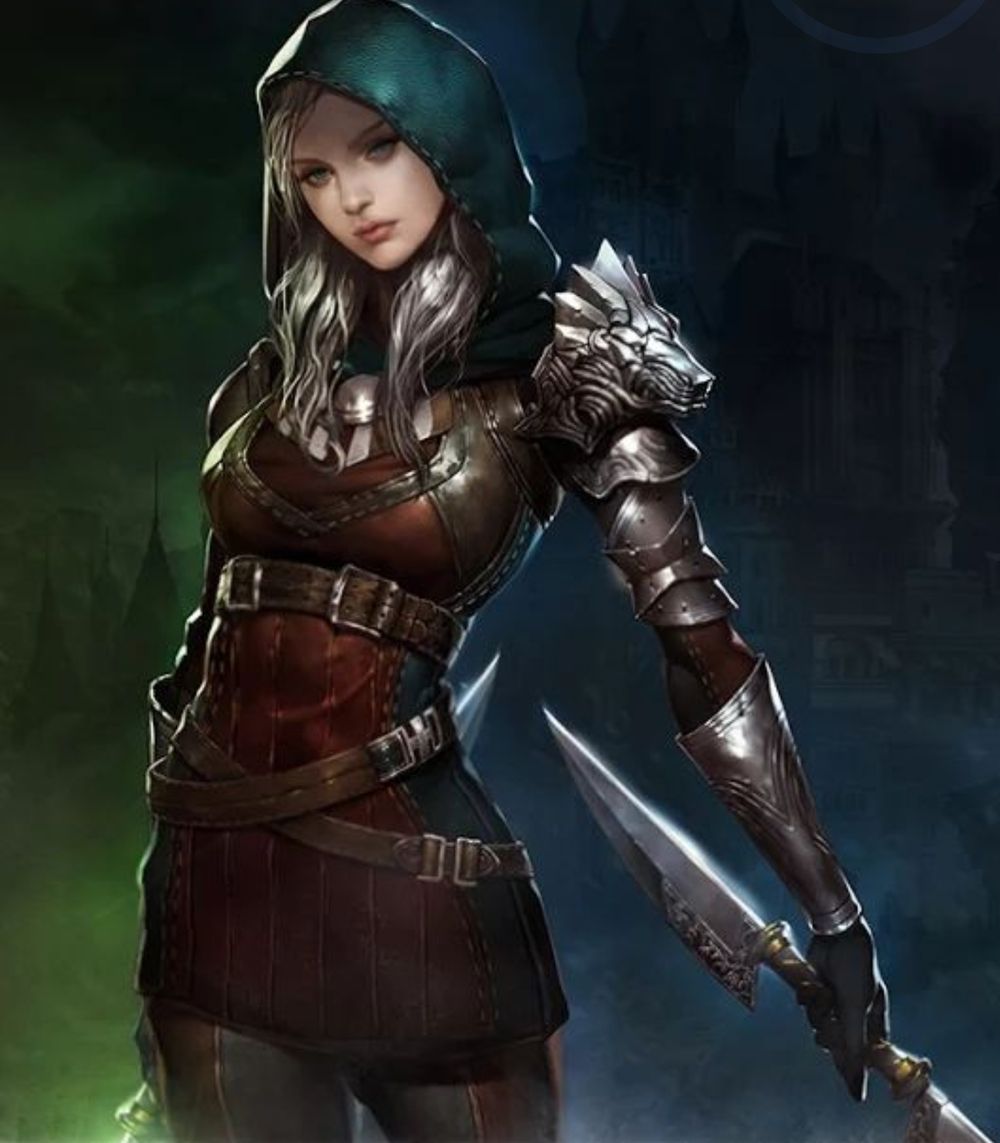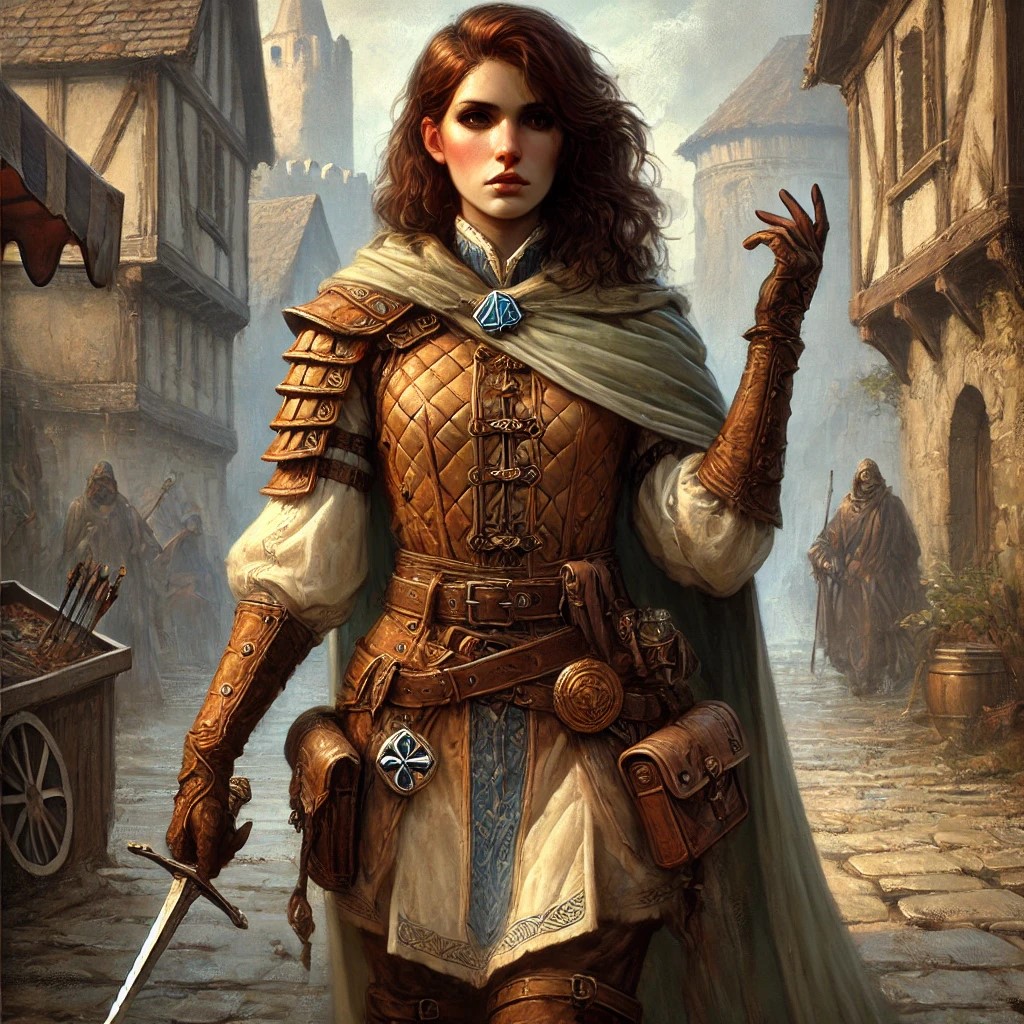Multi-class Characters
Multi-classed characters are individuals who pursue two or more character classes simultaneously, granting them a broader range of abilities, greater adaptability and more attack options than their single-classed counterparts. However, this comes at the cost of slower advancement, as all earned experience must be divided among the character's chosen classes, requiring more time and effort to gain new experience levels.
Contents
There are no limits as to which classes can be combined, although the ability stats of multi-classed characters must meet all minimum requirements for each class they pursue — and in addition they must have a minimum of 15 in the primary attributes of each adopted class. For example, a multi-classed cleric/fighter must have a minimum 15 strength and 15 wisdom, which is significantly higher than the standard requirements for either class individually. These heightened prerequisites ensure that only those with exceptional aptitude can successfully train in multiple disciplines, particularly if they wished to have a playable constitution and dexterity stat also.
Characters must become multi-classed at 1st level; they cannot simply "pick up a new class" later in their adventuring career by declaring their intent to do so. This restriction exists because the rigorous training required to master multiple disciplines must begin in childhood, with dedicated instruction shaping the character's abilities from an early age. Attempting to gain a new class later in life would require full retraining, a process demanding years of uninterrupted study and practice — effectively removing the character from active play for an extended period.
Character Age
When determining the character's starting age, begin with the highest base number of the classes selected. Then all modifiers from all classes that are possessed are rolled. An elf fighter-cleric would begin with the number "38" and add a d8 and a d4. A human fighter-cleric would begin with 20 and add 2d4.
Determining Hit Points
Calculating the multi-class character's hit points (h.p.) requires rolling one appropriate die per character class, then dividing that number by the number of classes, with fractions discarded.
- For example, the non-player character Jean is a paladin-mage-thief starting at 1st level. Thus, he rolls 1d10, 1d4 and 1d6, the correct hit die for each class, obtaining a "9," "1" and "4" — a total of 14. Divided by 3 classes, the total hit points are 4⅔, or "4" h.p. If Jean has a constitution of 15, he gains a +1 bonus to his total adjusted hit dice, for "5" h.p. If he's 180 lbs., he rolls a d8 for his mass, receiving a 4. This makes Jean's total hit points equal to "9." Not great for a paladin, but fair for a thief and good for a mage.
A player character always starts at 1st level with maximum h.p. If Jean were a player character, his initial hit points would be 10+4+6 = 20, divided by 3, plus 1 for constitution and 4 for mass, giving him a final total of 11 instead of 9. Above first level, a player character's hit points increase like those of NPCs.
Armour & Weapons
When selecting armour and weapons, multi-classed characters must adhere to a consistent rule regardless of which classes are combined. The strictest armour limitations are always applied, meaning the character is bound by the most restrictive class requirements. Conversely, the character receives the most beneficial weapon options, allowing them to wield any weapon permitted by any of their classes.
- For example, a fighter-cleric faces no armour restrictions since both classes allow the use of full armour... and because the fighter has the superior weapon selection, the multi-classed character gains access to all possible weapons also.
In contrast, Jean, the paladin-mage-thief, is subject to the most severe armour restriction among his classes. Since mages are prohibited from wearing armour, Jean is likewise barred from doing so. However, when it comes to weapons, he benefits from the paladin's full selection, meaning he may wield any weapon — including those unavailable to thieves or mages, such as a sword or a bow.
The number of weapon proficiencies available to a multi-classed character is determined by whichever class offers the most. Additional proficiencies are gained according to the rate of the fastest-advancing class; penalties for non-proficiency are determined by the most lenient of the character's classes.
Monks, whether multi-classed or not, retain their armour class bonuses, as these derive from their sage abilities rather than their class restrictions. However, any class linked with a monk would not be able to wear armour. This means a monk-multi-classed character continues to benefit from their training, even if other class limitations might otherwise apply.
Sage Abilities
Multi-classed characters are permitted to choose one starting sage field from each class they possess, but they may select only a single "primary" sage study. This primary study can be taken from any of the fields available to the character, but only one may be chosen. All sage abilities across all these studies at thus gained; in some cases, duplicates may occur, but no special benefit derives from this.
- For example, Jean, the paladin-mage-thief, might select animal training, science and fraud as his three fields. However, he would only be able to select his primary study from one of these three fields. The remaining two fields would not receive a primary study but would still grant secondary and outside studies.
Because Jean has three classes, he benefits from an unusually large number of secondary and outside studies, far more than a single-classed character. This is one of the greatest advantages of multi-classing, as it allows characters to develop a broad and diverse set of knowledge-based abilities, making them highly versatile in both practical and strategic applications.
Gaining Experience
Multi-classed characters are not eligible for the 10% experience bonus granted to single-classed characters based on their primary attributes. This reflects the broader and more demanding nature of their training, requiring mastery in multiple disciplines rather than specialisation in a single path.
Unlike in some systems, Experience (X.P.) is not divided among a character's classes. Instead, the total experience points (X.P.) required for all of the character's classes are added together to determine when the character advances to the next level.
- For example, a fighter requires 2,001 X.P. to advance to 2nd level, while a cleric requires 1,501 X.P.. A fighter-cleric, therefore, must accumulate 3,501 X.P. to reach 2nd level. Note that it's not "3,502" — the extra point is discarded in order to maintain the standard format where experience points are concerned.
This pattern continues as the character advances in level. A fighter/cleric would require 7,001 X.P. to reach 3rd level, 14,001 X.P. to reach 4th and so on. Once a multi-classed character reaches the threshold for a new level, they gain all abilities and bonuses associated with their advancement simultaneously across their classes. This means improvements to hit points, attack ability, spellcasting, sage abilities, proficiencies and any other level-based benefits are applied together rather than staggered.
Dropping Classes
Multi-classed characters may choose to drop one of their additional classes upon reaching their next experience level. At that point, the player must declare which class is abandoned, and from then onward, no further experience is required for that class. The character retains all benefits gained from that class up to the point of dropping it, but progression in that discipline permanently ceases. A dropped class cannot later be picked up again.
- For example, Keerie, a fighter-thief, has accumulated 3,251 X.P., enough to reach 2nd level in both classes. Upon leveling up, she announces that she drops her fighter class. Going forward, she intends only to advance as a thief. To reach 3rd level as a thief, she now needs the total X.P. equal to 1 level of fighter plus two levels as a thief, or 4,501 X.P.
Although she retains all abilities and benefits previously gained as a fighter, she can no longer gain new weapon proficiencies from the fighter class. However, she still applies the fighter's non-proficiency penalty to weapons she has not trained with. Similarly, she won't gain any additional knowledge points in sage fields or studies associated with the fighter class.
Once a class is dropped, it cannot be picked up again. For game purposes, it is assumed that the character has reached a "limit of ability" — a point where they feel unable to progress further in that particular profession. This represents the character's personal decision to focus their efforts entirely on their remaining class or classes, abandoning their previous studies.

